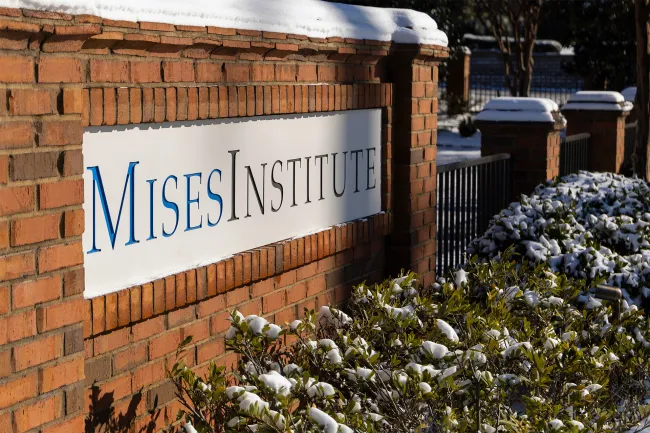There have been four gold busts under the fiat dollar money regimes since the “freeing” of the gold price in March 1968. If the past is any guide to the future the trigger to the fifth bust will include a key component - optimism on reform, replacement or just sounder management of the contemporary US fiat money regime. Hope is measured relative is relative to prior desperation. Suffice to say, all these previous episodes of supposed fiat dollar monetary renaissance proved to be false dawns, albeit of highly variable length.
During the boomtimes in gold which precede the busts an underlying theme is how the growing failure of the fiat dollar monetary system could mean a much larger monetary role for gold in the long run. Gold bullion and coins – the base of any gold monetary system – soars in value as consistent with a grown likelihood of gold money replacing fiat money to a considerable extent over the long run. Four times, however, shock has interrupted this gazing at a future with a hugely expanded role of gold money.
Take the first gold bust starting in mid-1974, the gold price (in terms of 2025 purchasing power dollars) falling from 1002 to 580 by mid-1976. The late but fierce monetary squeeze of the Burns Fed (starting in Spring 1973) ushered in a great recession and alongside reported CPI inflation eventually fell sharply. The contemporaneous successes of German and Swiss monetarism seemed to point to a scope for fiat money reform elsewhere, most importantly in the US. In the political arena there was support in Washington from both sides of the aisle for reform, culminating in the Federal Reserve Reform Act of 1977 (which obtained virtually unanimous approval in the House). This established price stability as a mandate of the Fed (alongside mandates for employment and low long-term interest rates) together with regular (at first quarterly) reporting to Congress on targets for money and credit growth.
Next the second gold bust starting in New Year 1980 on the news of the “Volcker Monetarist Experiment”. The gold price (in 2025 dollars) fell from a peak of 1629 to a low of around 880 in early Spring 1985. The fiat dollar triumphalist could argue that at last German monetarism had been imported to the US. Already, however, from Winter 1984/5, the Volcker Fed was veering into a new great monetary inflation, camouflaged at first by a coincident (transitory) crash of the OPEC cartel and related plunge in energy prices. This Volcker monetary inflation was a key accompaniment to the James Baker orchestrated dollar devaluation policy under the Second Reagan Administration.
Then came two back-to-back gold busts which together form the third bust. From early 1988 when the markets first got whiff of a likely monetary tightening ahead - following the extraordinary monetary injections initiated by the Federal Reserve in immediate response to the October 1987 stock market crash - the gold price fell from its 1988 peak of1360 to 900 in mid-1993 (all in dollars of 2025 purchasing power). The Greenspan Fed imposed a tight monetary squeeze through 1989/90 which culminated in global asset inflation turning to deflation (most of all in Japan) and a big fall in reported consumer price inflation from its again troublesome highs. The plunge in the gold price was in tune with a widespread sense that late in the day the Fed had pulled the fiat money system back from a debilitating inflation just in time.
The subsequent back-to-back fall in the gold price to 480 ran from 1993 to 2000/2001. These latter years were marked by the adulation of Maestro Greenspan and the “Great Moderation”. The collapse in the gold price mirrored this false confidence in the Fed’s vaunted new skill in managing the actual fiat money system. In fact, under the smooth veneer was a giant monetary inflation camouflaged in goods markets by the positive supply shocks of the IT revolution and globalization. Also relevant to the actual gold bust was the transition of the US Federal budget into surplus through the mid and late 1990s, meaning less apparent danger of future monetization of government debt burdens.
Fast forward to the fourth bust of gold: the collapse of its price from 2316 (in 2025 dollars) in September 2011 to 1680 in February 2016. That bust was ushered in by the success of the Republicans - who won control of the House in November 2010 - in reaching a deal with the Senate and Obama White House on meaningful budget expenditure reductions. Alongside with some lag there was gathering talk and then action with respect to the Fed pulling back from quantitative expansion (QE).
The narrative of the Fed printing money to finance run-away budget deficits which had had so much to do with the gold boom of 2008-11 now looked tired. True, the crisis of European Monetary Union (2010-12) had exposed that German monetarism was finally broken and was no longer a role model for fiat money reform elsewhere. But all the noisy critiques of the Bernanke Fed’s money printing had overlooked one new fact. Since Autumn 2008 reserve deposits at the Fed paid interest at near the policy rate (rather than zero as previously). In consequence demand for reserve deposits at the Fed (the principal form of base money) had surged. According to the soporific music of the fourth gold bust, the “gold bugs” had exaggerated the extent to which the monetary framework had been radicalized under the Bernanke Fed through 2007-11.
So how could the fifth gold bust come about? As a starting point we should realize that the pessimism at large (most of all as reflected in the gold market) about the flaws of the actual fiat dollar regime and the improbability of reforms in a sound direction is now surely greater than in previous gold booms. The Great Pandemic Inflation and its continued aftermath of inflation have shattered confidence or hope with respect to the fiat dollar monetary system. It is futile to pinpoint the exact straw which broke the camel’s back – where the camel is the “state of mind” alive to a substantial probability of sound money reform.
Meanwhile the deeply ailing public finances could mean that the Fed resorts to inflicting a further dose of inflation on the US public. Freezing actions and other forms of sequestration by the US with respect to foreign holdings of dollar assets – and similar action by allied authorities abroad – have seriously added to the perils of fiat money especially in the present dangerous geopolitical landscape.
So how could pessimism on fiat dollar money recede or the candle of hope about fiat dollar reform be re-kindled such as to trigger a fifth gold bust? Could there be yet again a pull-back from the brink?
A rise in CPI inflation through 2026 could mean that the next Fed Chair whatever he or she promised to President Trump might embark late on substantial monetary tightening say after the Mid-Terms. The constellation of forces in the political arena might change such as to make possible a large and deliberate program of government spending cuts. A new round of high CPI inflation and its unpopularity might mean a group of US congressmen and senators, either in one party or cross-aisle begin to craft proposals for sound money reform.
A fifth gold price slump could set in at a much higher level than today if in the meantime well-grounded pessimism on the present fiat regime deepens further. We should recognize, though, that a fifth slump is far from inevitable. Maybe the comedy titled “the Gold Bust” is really finished. Fiat dollar monetary reform may simply now be beyond the pale of reasonable expectations. The optimism regarding fiat reform or better fiat management which powered the gold busts of 1974 or 1980 or 1990 and 1997 or 2011 could prove to be dead for ever.


